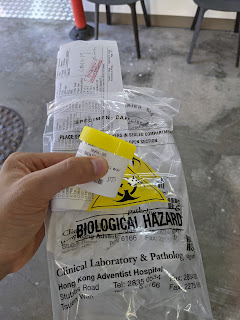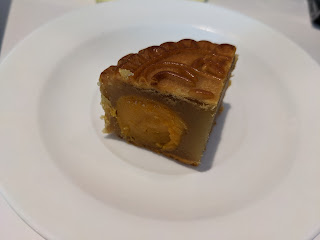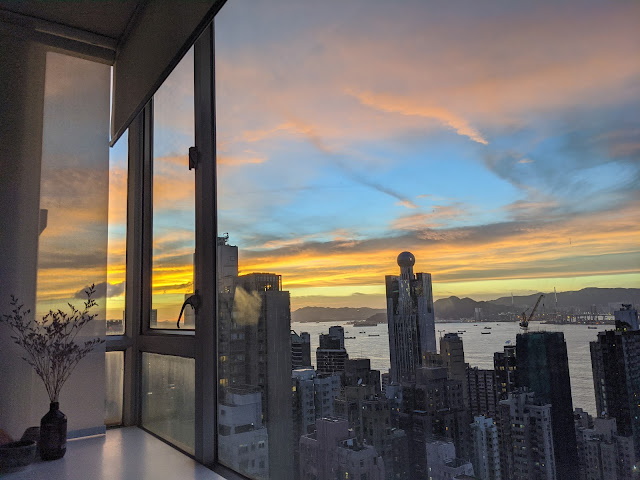Introduction
Trikonasana, Tri meaning ‘three’, kona meaning ‘angle’, is also known as the ‘Triangle Pose’. Trikonasan is a standing pose and has two primary forms: (i) Uttihita meaning ‘extended’, or (ii) Parivrtta meaning ‘revolved’.
Physical benefits
As a standing pose, lifting up from gravity, Trikonasana can be classified as both a strengthening and a stretching asana. When practised, this asana strengthens the legs, the posterior chain and the core. In addition, it provides lengthening of the spine and facilitates stability in the shoulders, the ankles and the knees. Trikonasana also promotes flexibility in the legs, hips, groin and neck. Depending on the instructions the pose can be performed as a lateral bend, a forward bend, or even a twisted posture. This posture is great for stimulating the nervous system as well as activating the digestive and sexual organs. The primary chakras activated during Trikonasana are: Anahata Chakra (Heart), Manipura Chakra (Solar Plexus), Swadisthana Chakra (Sacral) and Muladhara Chakra (Root)
Contraindications
Due to the regions of the body that are engaged whilst performing this pose the following contraindications should be highlighted, those with spine issues (example: bulging, or slipped discs) should avoid this pose. Special care should be taken for those with: scoliosis or neck, shoulder, hip, knee and ankle injuries. Excluding physical limitations, those with high blood pressure, vertigo, heart conditions, headaches or diarrhea will require a more cautious approach. Finally, pregnant women too, should take and make use of the modifications where available.
Warmup
Adequate warm up is required as Trikonasana recruits multiple areas of the body. Cat and Cow poses are useful for relaxing the posterior chain. Malasana is good for waking up the adductors, the hips and the glutes. In Malasana focus on pressing the elbows into the knees, and the knees into the elbows as you extend the chest. To open up the sides, the obliques, and the chest, perform some standing lateral stretches. Stand with your feet hip distance apart. Breathe in, raise your right hand above your head, next to your ear, as you breath out gently reach over to your left hand side. Inhale as you raise up, repeat on the opposite site. With your feet still hip distance apart, breathe in as you raise your arms up to shoulder height. As you breathe out, twist dynamically to your right hand side, opening up your chest and shoulder, breathe in as your twist to face your left hand side. Finally, find a prop, sturdy enough to support your weight, a wall or a chair. Wall swings are good for loosening the hips. Rest your right hand against the prop, with your body perpendicular to the prop. Keeping your legs straight, raise your right left up creating flexion in the hip, then swing your right leg back, creating extension in the hip. Do this for ten count to warm up the hips, glutes, hamstrings and quadriceps.
Approach
The foundation of this asana, as with all standing asanas starts with the position of the feet. The feet dictate the alignment and will provide the strength to support the pose. Generally speaking, the wider the feet apart, the more challenging the pose as it requires more balance, requires more flexibility through the hamstrings and the adductors, but also requires more strength through the quadriceps and the calves.
To enter Trikonasana, start in Tadasana, separate your legs and raise your arms up to shoulder height; your left and right hands should make a straight line. Your face and entire body will be facing in one direction. Now is the opportunity to adjust the distance of your feet, the feet should be more than shoulder distance apart. A good measure is somewhere between your feet being directly underneath your out-stretched elbows to having your feet directly underneath your wrists; as seen with the traditional alignment of Trikonasana. The distance should be adjusted to your level, where you can still feel even pressure on both feet. This is the starting position for Trikonasana.
Trikonasana Starting Position
Starting with the right side, turn the right foot to face 90 degrees outward such that the foot is pointing in the same direction as your extended right hand. Again, this is a chance to adjust the position of your feet. If possible, line up the heels of both feet, pointing in perpendicular directions. This alignment is more demanding from a balance perspective and students are encouraged to line up the heel of the right foot with the mid-point of the left foot. In this position you are already activating the calves, hamstrings, glutes, adductors, hips, knees and ankles. Engage the quadriceps, as not to put too much pressure on the knees, evenly apply pressure through the feet and make sure not one leg is working harder than the other. Here we can observe any immediate weaknesses. Points to pay attention to are strain on the joints, such as the knee, the hips or the ankles, or any muscular strain, either through the hamstrings, calves or quadriceps. People exhibiting any of the above symptoms, or with acute hyperextension in the knee are encouraged to slightly bend the leading (right) knee.
Uttihita Trikonasana
Time to focus on the upper body component. Here is the approach for Uttihita Trikonasana. Take a deep breath and as you exhale, engage the legs, extend your body to the right hand side in the direction of your out-stretched arm and fold down so that you can place your right palm on the floor outside of your right leg. At this point in time, your body should be in one plane. Legs, hips, chest, shoulders, arms all in one plane of direction. Your arms are still in one straight line, now perpendicular to the floor, with a gentle stretch of the chest and pectoral muscles as well as a slight squeeze in the upper back. A modification to assist with plane alignment would be to perform this pose against a wall, paying attention at keeping the hips, the back and the shoulders all touching the wall in one plane.
Again, the flexibility of your trunk and legs will determine the placement of your right hand. Hips should be level, or “square”. Hips and chest should be facing in the same direction of the rear (left) foot. Your legs should be active, engaging both quadriceps, imagine gently pulling each foot towards the midline as you engage your glutes. You might feel stretching in the right hamstring, external rotation in the right leg, adduction in the left leg and a gentle pull in the left iliotibial (IT) band. Your spine should be at ninety degrees to your waist, or parallel to the floor. Your right palm should be there for support, not taking all of your body’s weight. Extend and lengthen the spine, with your head moving in the direction of your right foot.
You should feel a stretch in the trunk. Specifically, contraction on the right hand side, lengthening on the left hand side. Keep the core engaged. If your spine is not straight, or if your chest is not facing up towards the side modify the pose by raising the hand. Your arms should be lined up in one straight line. You can raise the hand by placing it on your foot, on your shin, or place a block near to your foot to support your right hand. Raising the right hand up from the ground alleviates the weight and the intensity of the stretch through the hamstrings and the trunk. Continue to keep your legs active. Finally, turn your head up to look at the thumb of your left hand. Note, those with neck injuries or problems, continue to look straight ahead. Uttihita Trikonasana.
To come out of the pose, turn your head down to your right leg, keep the legs and glutes engaged. Inhale, raise the body up, turn your right foot and head to face forward and return to the starting position with arms and legs apart. Join your legs, lower your arms and return to Tadasana. The counterpose for Uttihita Trikonasana, is to perform the same movement on the opposite side, or to do Parivrtta Trikonasana.
Parivrtta Trikonasana
Parivrtta Trikonasana or Revolved Triangle pose, requires the same lower body foundation, however we add a twist that recruits more from the core, the hips, the glutes and the IT band. As with before, find your way into the starting position with arms and legs apart. Use the same spatial constructs described above. Starting with the right side, turn the right foot to face 90 degrees outward such that the foot is pointing to the right hand side. Place your right hand on your right hip, turn your torso so that it’s facing in the direction of your right foot. Breathe in, raise your left arm up, next to your ear. Breathe out as you extend and bend forward facing towards your right foot. Use your core to slowly twist to the right, moving your chest so that it is facing to the right. Place your left palm just outside, to the right of your right foot. Again, adjust the height and position of your left hand, either by bringing it up to your shin, to the left of your right foot, or by placing it on a block.
Extend both arms so that they are in one straight line, you will feel engagement in the middle to upper back, and in the core. Concentrate on turning and broadening the chest towards the right hand side, this requires rotation in the thoracic and activation of the core and obliques. On this side, the revolved triangle pose is more demanding on the lower back, the right glute and the right hamstring as it is more difficult to balance in a twisted position. There is a natural tendency to collapse the left hip. Try to keep your hips level and focus on bringing the right hip down and back, and your left hip up and forward. The twisted position will make breathing more challenging with the breath feeling shallower. Breathe and focus your attention to the Manipura Chakra. Again, extend your spine towards your right foot, keep your hamstrings and your quadriceps active. Finally, if this all feels comfortable, look up at the thumb on your right hand. Parivrtta Trikonasana.
To come out of the pose, turn your head down to your right leg, with your legs and glutes still engaged, lower your right hand down to your right hip. Inhale, as you release the twist and raise the body up, turn your right foot and head back to face forward and return to the starting position with arms and legs apart. Join your legs together, lower your arms and return to Tadasana.The counterpose for Parivrtta Trikonasana, is to perform the same movement on the opposite side, or to do Uttihita Trikonasana.
Neutralising Movements
Trikonasana can be demanding on the hips, the knees, the ankles, the lower back, the chest and the neck. Depending on where you feel stress you should loosen the areas that exhibit exertion. For the hips and adductors, seated hip rotations. Sit on the floor with legs wider than shoulder width apart and knees bent at ninety degrees, slowly breathe out as you drop your knees to the right hand side creating a gentle external rotation in the right leg, and gentle internal rotation in the left left. Breathe in as you bring the legs up, knees pointing back up at ninety degrees. Breathe out, repeat on the other side, as you drop your knees to the left hand side. Repeat for a handful of repetitions.
For the hamstrings and calves, sit on the floor with feet extended directly in front of you, place the palms of your hands inline and next to your hips or just slightly behind your hips. Keep the core engaged and shake your legs up and down, providing release to the quadriceps, hamstrings and calf muscles. For the hips, groin and legs, sit in Virasana with your hips resting on your heels. Slowly place your hands on your knees, as you exhale squeeze your back muscles and raise and extend the chest up to loosen the chest and upper back. For the lower back, sit in a cross-legged position, inhale, exhale as you twist to the right. Look at, or past your right shoulder, lengthen the lumbar, as you twist through the thoracic. Hold for a few breaths, inhale as you release the twist. Repeat on the other side.
Finally, to release any tension experienced in the neck, it is recommended you perform some neck stretches or rotations. Lateral neck stretch, exhale as you drop your right ear to your right shoulder, hold for a few breaths, inhale as you raise your head up. Repeat on the other side. Neck rotations, exhale as you turn your head to look to your right shoulder, inhale as you return your head to centre. Again, repeat on the other side.
Note, the Trikonasana described above, is the lateral bend variation, there is also a forward fold variation, which is less focused on having the upper body in a flat plane.





































